- HOME
- FOOD
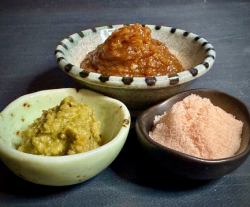
Condiments made from Okinawan ingredients
Included in the course
In order to enjoy the original taste of Agu pork, we offer condiments made from Okinawan ingredients, such as Yagaji Island salt, Ishigaki Island Shikwasa pepper, and Tamanaha miso (original blend).
1/10
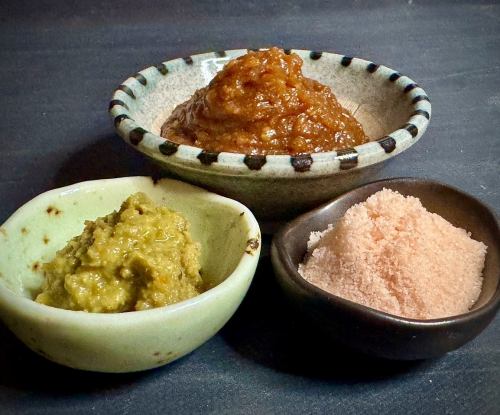
Condiments made from Okinawan ingredients
Included in the course
In order to enjoy the original taste of Agu pork, we offer condiments made from Okinawan ingredients, such as Yagaji Island salt, Ishigaki Island Shikwasa pepper, and Tamanaha miso (original blend).
![Appetizer Okinawa local cuisine [Kuubuirichi]](https://cdn.r-corona.jp/prd.rb.r-corona.jp/assets/site_files/8r68jm09/49251002/9zkt_w250h250.jpg)
Appetizer Okinawa local cuisine [Kuubuirichi]
Included in the course
1/10
![Appetizer Okinawa local cuisine [Kuubuirichi]](https://cdn.r-corona.jp/prd.rb.r-corona.jp/assets/site_files/8r68jm09/49251002/9zkt_w500h500.jpg)
Appetizer Okinawa local cuisine [Kuubuirichi]
Included in the course
![Appetizer Okinawa local cuisine [Jimami tofu]](https://cdn.r-corona.jp/prd.rb.r-corona.jp/assets/site_files/8r68jm09/49251003/uwt4_w250h250.jpg)
Appetizer Okinawa local cuisine [Jimami tofu]
Included in the course
Enjoy the soft and jiggly roasted Jimami tofu, made with artisanal skill and only found in Okinawa.
1/10
![Appetizer Okinawa local cuisine [Jimami tofu]](https://cdn.r-corona.jp/prd.rb.r-corona.jp/assets/site_files/8r68jm09/49251003/uwt4_w500h500.jpg)
Appetizer Okinawa local cuisine [Jimami tofu]
Included in the course
Enjoy the soft and jiggly roasted Jimami tofu, made with artisanal skill and only found in Okinawa.
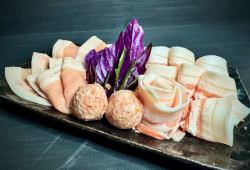
Carefully selected Agu pork
Included in the course
Enjoy Agu with the following cuts: loin, belly, and meatballs.
1/10
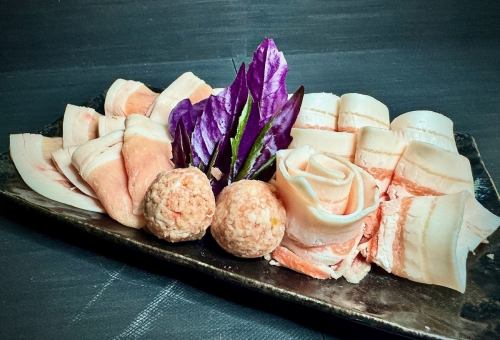
Carefully selected Agu pork
Included in the course
Enjoy Agu with the following cuts: loin, belly, and meatballs.
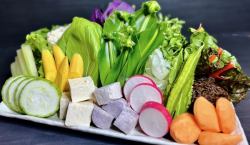
Assortment of Okinawan vegetables
Included in the course
We offer 16 different seasonal varieties, including Chidekuni (island carrot), Nabera (loofah), Shibui (winter melon), Tamu (taro), Kuganiimo (golden potato), Urizunmame (square winged bean), Otaniwatari, Handama (golden golden grass), and vegetable papaya (contents vary depending on the season).
1/10
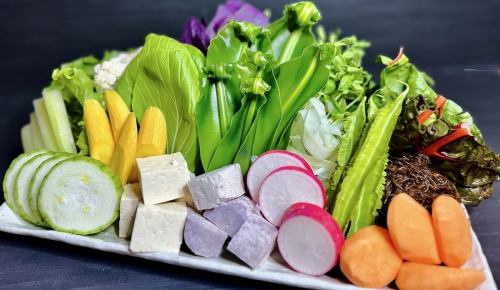
Assortment of Okinawan vegetables
Included in the course
We offer 16 different seasonal varieties, including Chidekuni (island carrot), Nabera (loofah), Shibui (winter melon), Tamu (taro), Kuganiimo (golden potato), Urizunmame (square winged bean), Otaniwatari, Handama (golden golden grass), and vegetable papaya (contents vary depending on the season).
![Okinawa's specialty [Green caviar] Sea grapes](https://cdn.r-corona.jp/prd.rb.r-corona.jp/assets/site_files/8r68jm09/49251008/e5qd_w250h250.jpg)
Okinawa's specialty [Green caviar] Sea grapes
Included in the course
The sea grapes from the Izena Fisheries Cooperative Association won the Excellence Award at the Okinawa Prefecture Sea Grape Competition hosted by the Fisheries Division of the Okinawa Prefecture Agriculture, Forestry and Fisheries Department.
1/10
![Okinawa's specialty [Green caviar] Sea grapes](https://cdn.r-corona.jp/prd.rb.r-corona.jp/assets/site_files/8r68jm09/49251008/e5qd_w500h500.jpg)
Okinawa's specialty [Green caviar] Sea grapes
Included in the course
The sea grapes from the Izena Fisheries Cooperative Association won the Excellence Award at the Okinawa Prefecture Sea Grape Competition hosted by the Fisheries Division of the Okinawa Prefecture Agriculture, Forestry and Fisheries Department.
![Okinawa soba [jagamen]](https://cdn.r-corona.jp/prd.rb.r-corona.jp/assets/site_files/8r68jm09/49251011/q2ci_w250h250.jpg)
Okinawa soba [jagamen]
Included in the course
Ginoza Village is one of the prefecture's leading potato producing areas, and these potatoes are kneaded into Okinawa soba noodles called "jagamen." Enjoy the smooth and silky texture.
1/10
![Okinawa soba [jagamen]](https://cdn.r-corona.jp/prd.rb.r-corona.jp/assets/site_files/8r68jm09/49251011/q2ci_w500h500.jpg)
Okinawa soba [jagamen]
Included in the course
Ginoza Village is one of the prefecture's leading potato producing areas, and these potatoes are kneaded into Okinawa soba noodles called "jagamen." Enjoy the smooth and silky texture.
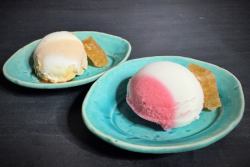
Dessert: ice cream and pickled winter melon, a traditional confectionery from the Ryukyu Dynasty
Included in the course
For dessert, we have ice cream, served with the traditional Ryukyu Dynasty sweet "Tsuyu Pickle". The ice cream in the photo is: Black honey vanilla ice cream Acerola yogurt
1/10
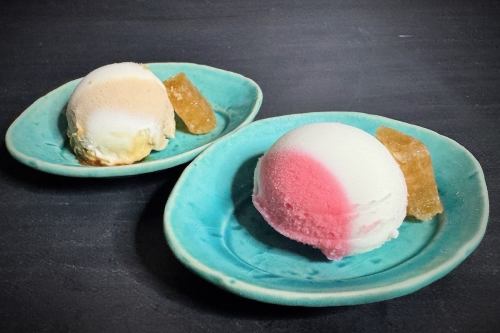
Dessert: ice cream and pickled winter melon, a traditional confectionery from the Ryukyu Dynasty
Included in the course
For dessert, we have ice cream, served with the traditional Ryukyu Dynasty sweet "Tsuyu Pickle". The ice cream in the photo is: Black honey vanilla ice cream Acerola yogurt
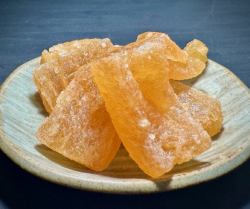
The traditional Ryukyu Dynasty sweet "Tsuyuzuke"
Included in the course
pl-tougan02The traditional Ryukyu Dynasty sweet "Tōugazuke" is said to have been brought to Okinawa from Fuzhou, China, about 300 years ago.When the investiture envoys visited the island, the menu for the Crown Ship Cuisine, which was a banquet, included 16 types of sweets, dried fish, and fruits, among which were Tachibana mochi and pickled winter melon.It was only after the Meiji period that it became available for the general public to eat.Pickled winter melon is made using shiny winter melon that is beautifully green and full of moisture.
1/10
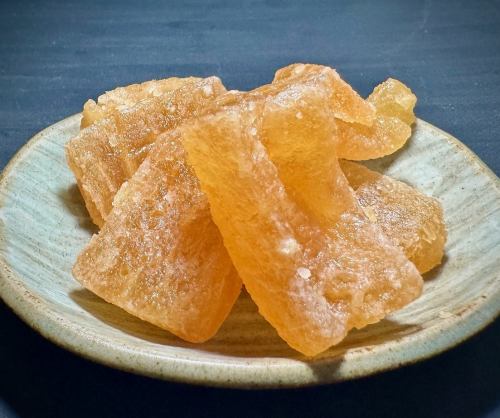
The traditional Ryukyu Dynasty sweet "Tsuyuzuke"
Included in the course
pl-tougan02The traditional Ryukyu Dynasty sweet "Tōugazuke" is said to have been brought to Okinawa from Fuzhou, China, about 300 years ago.When the investiture envoys visited the island, the menu for the Crown Ship Cuisine, which was a banquet, included 16 types of sweets, dried fish, and fruits, among which were Tachibana mochi and pickled winter melon.It was only after the Meiji period that it became available for the general public to eat.Pickled winter melon is made using shiny winter melon that is beautifully green and full of moisture.
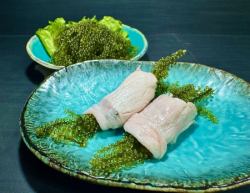
Agu Sea Grape Roll
An example of how to eat it
Enjoy our specially selected Agu pork shabu-shabu wrapped in plenty of sea grapes.The saltiness of the sea grapes brings out the umami of the Agu pork.
1/10
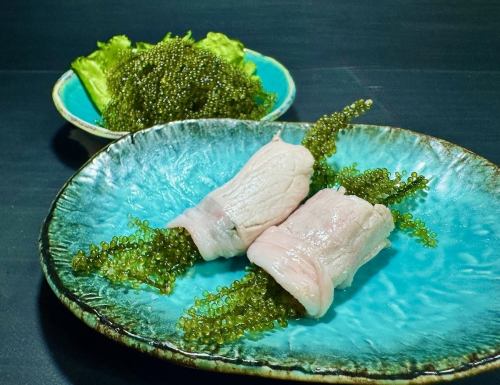
Agu Sea Grape Roll
An example of how to eat it
Enjoy our specially selected Agu pork shabu-shabu wrapped in plenty of sea grapes.The saltiness of the sea grapes brings out the umami of the Agu pork.
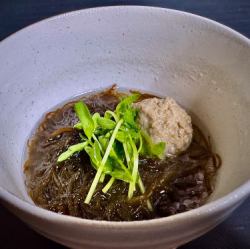
Mozuku seaweed soup
An example of how to eat it
Enjoy the mozuku soup with the Agu meatballs.Break the fishballs and enjoy the flavor.
1/10
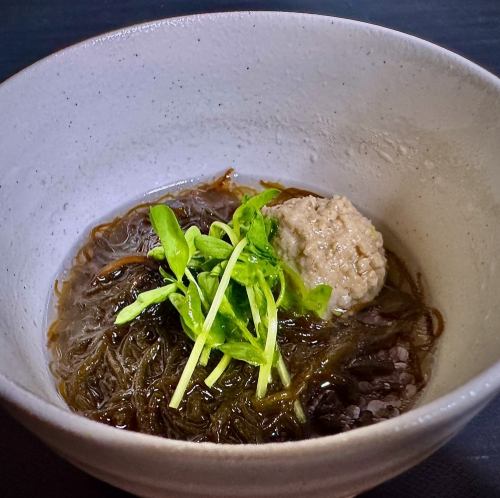
Mozuku seaweed soup
An example of how to eat it
Enjoy the mozuku soup with the Agu meatballs.Break the fishballs and enjoy the flavor.
Course content
Additional food menu

